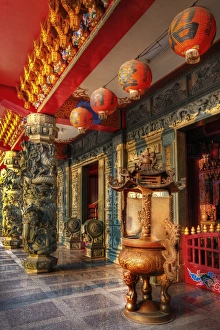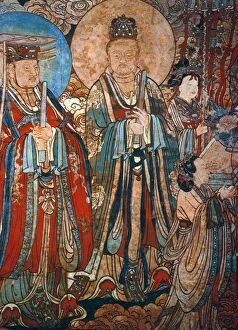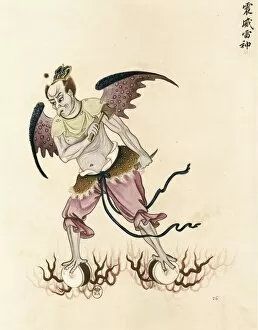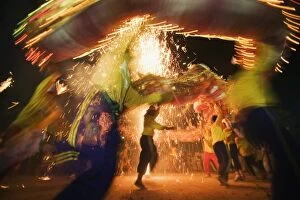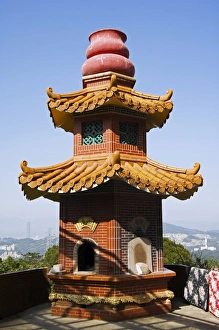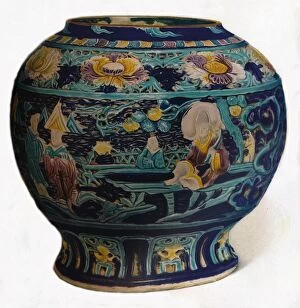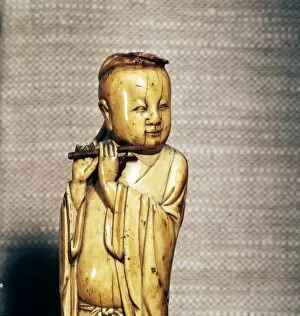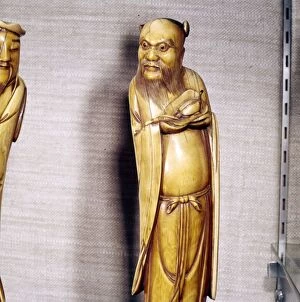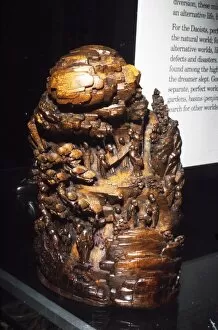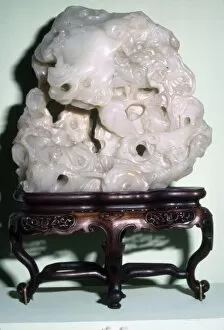Taoism Collection (#7)
Taoism, an ancient Chinese philosophy and religion, encompasses a rich tapestry of beliefs and practices, and is deeply rooted in the principles of balance, harmony
For sale as Licensed Images
Choose your image, Select your licence and Download the media
Taoism, an ancient Chinese philosophy and religion, encompasses a rich tapestry of beliefs and practices, and is deeply rooted in the principles of balance, harmony, and the pursuit of inner peace. One can catch a glimpse of Taoist spirituality through various cultural artifacts scattered across time and space. The enigmatic image of The Kitchen-God from 1922 captures the mystique surrounding this tradition's deities. Its unknown creator skillfully portrays a divine figure associated with domestic affairs, symbolizing blessings upon households. The teachings of Lao-Tse, Confucius, and Buddha have also influenced Taoism over centuries. These great thinkers shaped its philosophical underpinnings while emphasizing compassion, wisdom, and self-realization. In Southeast Asia's Thian Hock Keng Taoist temple stands Mazu sea goddess—a revered deity believed to protect seafarers. This sacred site in Singapore serves as a testament to Taoism's enduring presence throughout the region. Further south lies Cebu City in the Philippines where another Taoist temple stands tall—its vibrant colors reflecting devotion to spiritual enlightenment amidst bustling city life. The iconic Yin Yang symbol embodies one of Taoism's fundamental concepts—the harmonious interplay between opposing forces such as light and dark or masculine and feminine energies—an eternal dance that maintains cosmic equilibrium. Delving deeper into its mystical aspects reveals Chinese eroticism depicted in Sou Nu King—a treatise on sexual initiation dating back to the 4th century A. D. Within these pages lies an exploration of sensuality intertwined with spiritual growth—an embodiment of Taoist beliefs regarding physical intimacy as a path towards transcendence. Xuan Wu (Tran Vu), a bronze statue residing within Quan Thanh Temple in Ba Dinh District exudes strength and protection—a representation of one aspect within the pantheon worshipped by followers seeking guidance along their spiritual journey.



